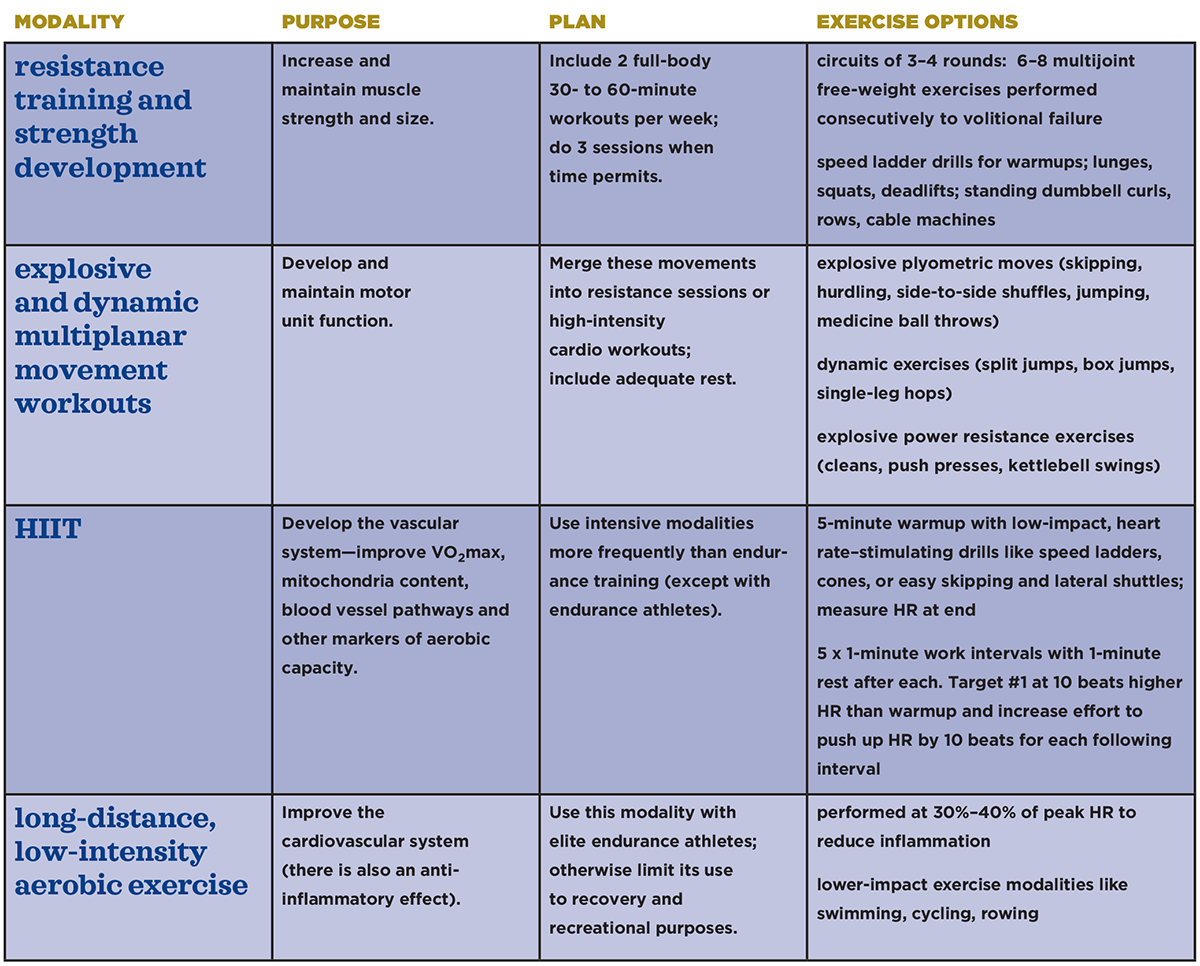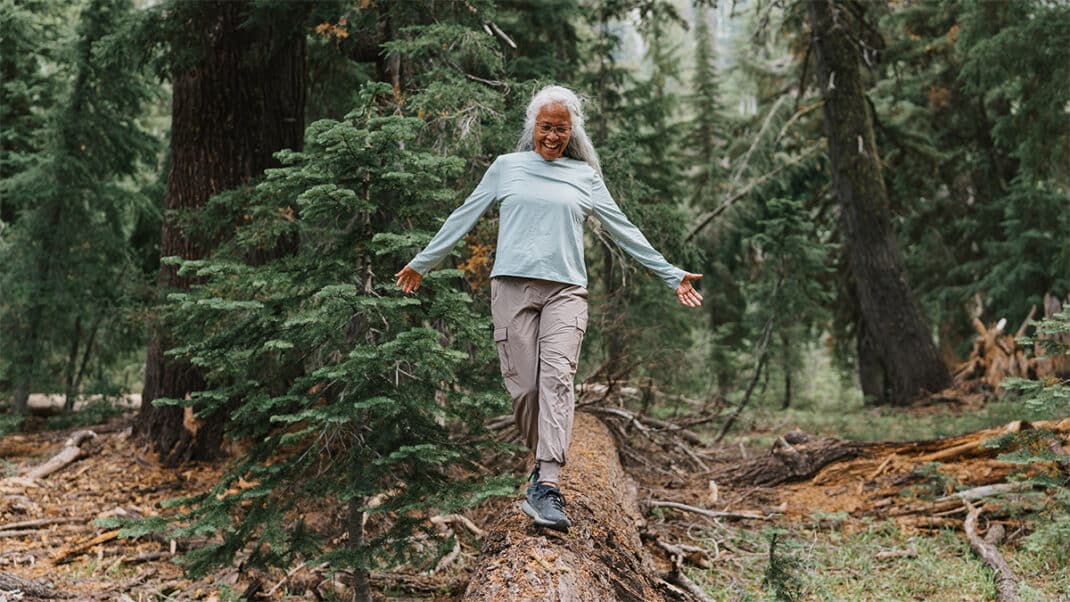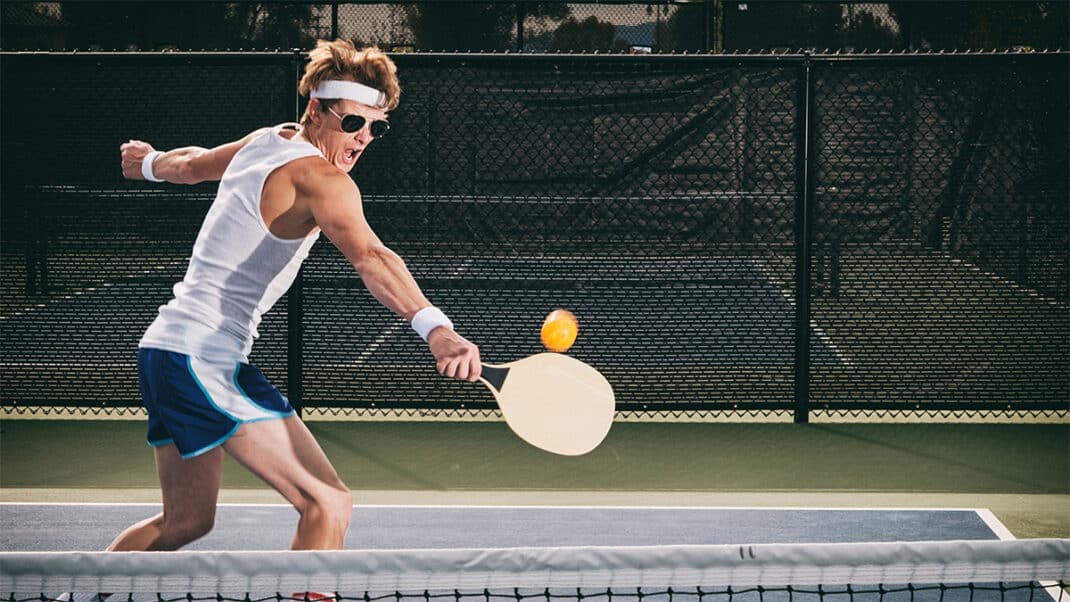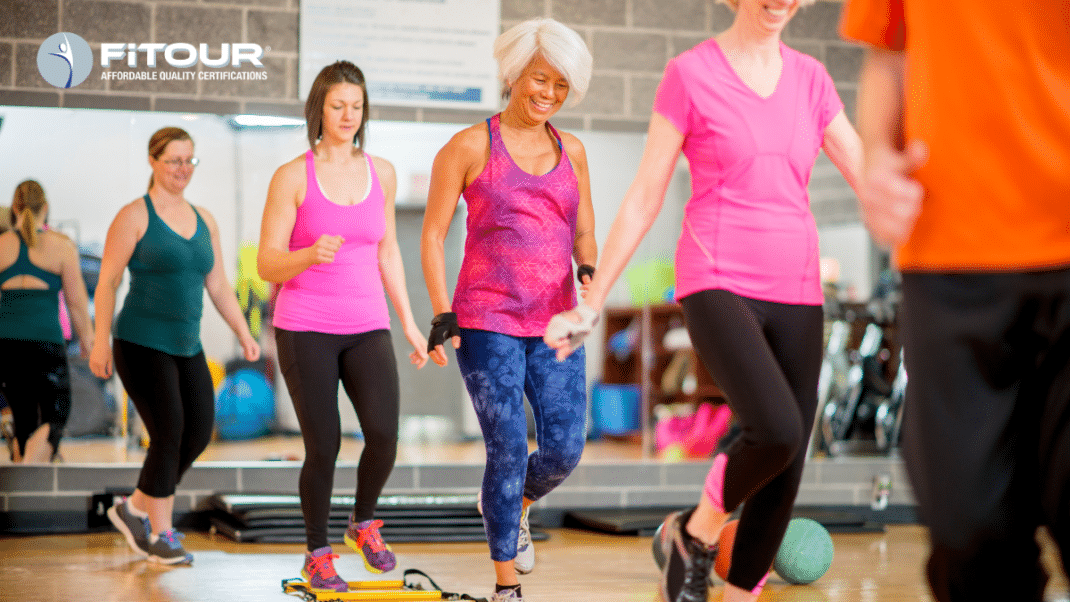Training Techniques for High-Performance Masters Athletes
Use science-based protocols to help masters athletes and clients in 50-and-older rec leagues.
| Earn 1 CEC - Take Quiz
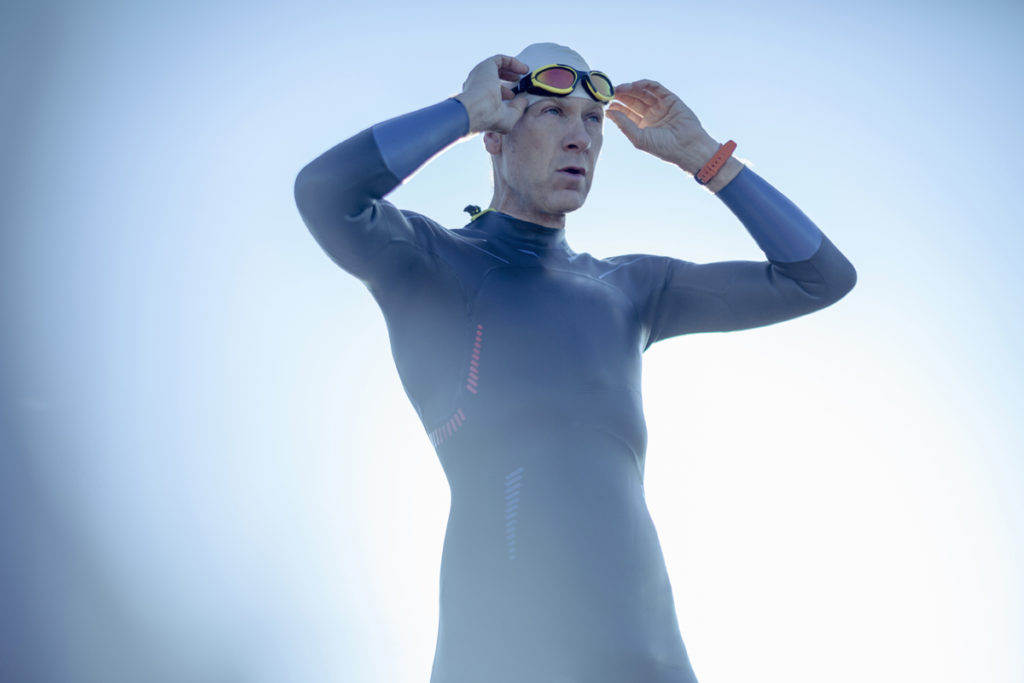
It’s been a banner 12 months for masters athletes.
- Sixty-five-year-old sprinter Karla Del Grande set a world record in the 65–69 masters age group in the 400-meter, clocking a time of 68.08. This gave her a trifecta with the world records she set last year, running 13.80 in the 100-meter and 28.53 in the 200-meter (Francis 2019).
- Charles Allie, age 71, set world records by running 57.26 in the 400-meter and 27.75 in the 200-meter. He missed the 100-meter record by just four-hundredths of a second with a time of 12.81 (Futterman 2019).
- On the endurance side, 71-year-old Gene Dykes set an unofficial world best in the 70- to 74-year-old age group in the marathon, running 2:54.23, at 6:39 minutes per mile (Butler 2019)!
Elite masters-level track athletes, weightlifters and swimmers are leading the way in boosting our understanding of high performance at older ages. While their accomplishments may represent the upper ends of the performance curves, their achievements provide evidence of the potential to maintain high physiological peaks through the decades.
That’s an important message for health and fitness professionals. With more than 100 million individuals in the U.S. over the age of 50 (Gillan 2014), the pool of potential athletes and clients interested in high-performance fitness is vast. For example, more than 13,000 participants over the age of 50 achieved qualifying standards to attend the National Senior Games in 2019. This number represented a 14% increase over the game’s previous participation best (NSGA 2019). Older athletes are also participating more often in charity events and becoming more frequent players in recreational leagues.
High performance can likewise be a goal for people 50 years and older who are not competitive yet want to maintain as much strength and endurance as possible, an attitude shared by many in the boomer age group.
Trainers and coaches can use the examples of elite performances, current aging research, anecdotes and personal experience to develop sound training protocols for this burgeoning population of masters athletes.
The Science of Aging and High Performance in Masters Athletes

The science examining the physiology of aging and athletic performance may provide clues to optimal training modalities for older adults.
Scientific interest in high-performance aging has only just begun. While there is a large body of research into the mechanisms of aging, this field has yet to examine highly trained adult athletes through their careers.
Many studies on aging are based on either moderately active, sedentary or frail older adults and involve cardiovascular training at low intensities rather than resistance training. Studies on resistance training protocols have been mostly limited to strength machines, which suit the population studied but do not reflect the best training protocols for high performance. At present, case and cohort studies of masters athletes are our best opportunities to examine how much capacity the human body has during the aging process.
What is most emphasized in current research on aging is that exercise may be unsurpassed in its ability to improve many—if not most—of the adverse health outcomes of aging that are due to lifestyle (Harridge & Lazarus 2017; Lazarus & Harridge 2018; Zierath & Wallberg-Henriksson 2015). The key for trainers and coaches is learning how to apply research results from minimally to moderately active individuals to the needs of highly trained people to determine effective amounts of various training modalities. The science examining the physiology of aging and the decline in athletic performance may provide clues.
Physiology of Aging and Performance Decline in Masters Athletes
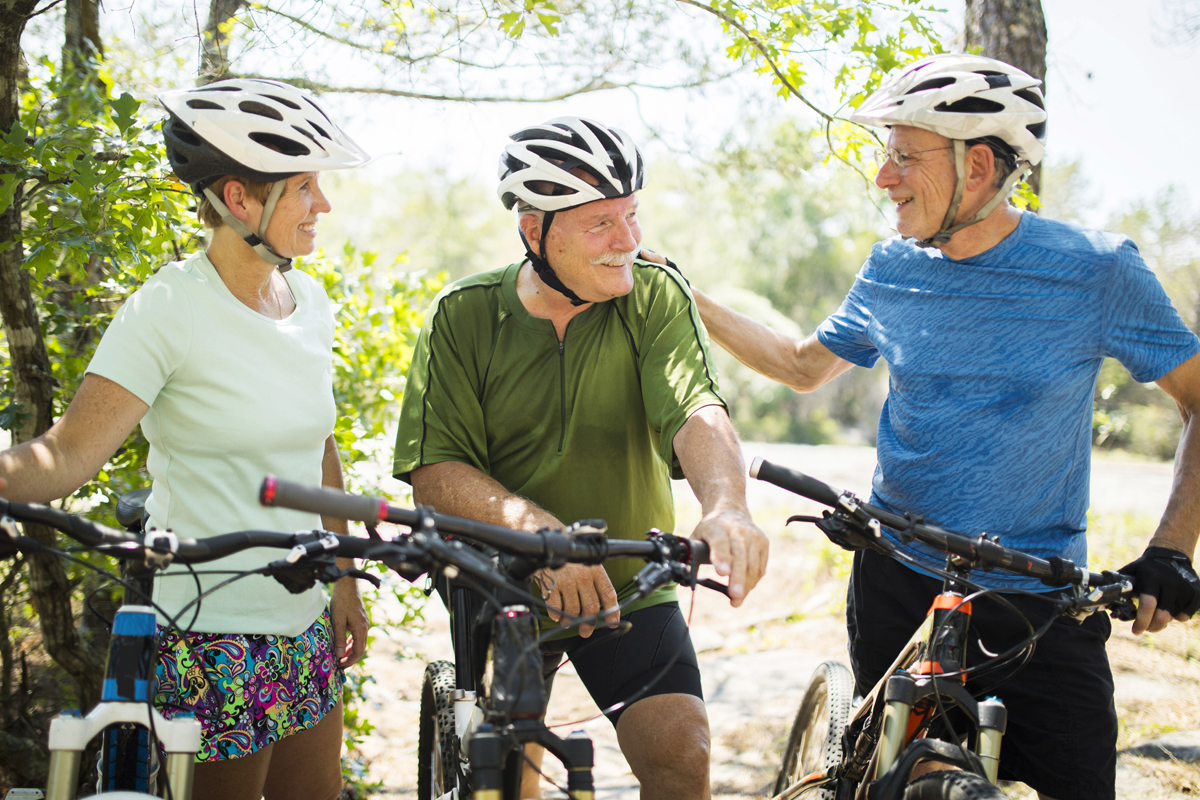
The declines in high-performance athletic physiologies after age 70 are still something of a mystery.
Most research tends to place the potential for individual physiological peak capacity somewhere in the mid-to-late 30s, at which time “normal aging” begins. After peak, a steady, linear decline of 1%–1.5% per year in various physiological functions progresses until the mid-to-late 60s. At this point, an exponential rate of decline begins, and each year can show a higher percentage of decline over the previous year.
At these rates, untrained sedentary individuals at age 70 might expect to have 50%–65% of their 35-year-old capacity (Lavin et al. 2019). The excellent news is that high-performing masters athletes seem to slow these averages down by half, enabling them to be within 70%–82% of 35-year-old capacity at age 70.
The declines in high-performance athletic physiologies after age 70 are something of a mystery, with many confounding variables in play. All we have to suggest the progression are performance declines in athletic events. And the limitations of using performance as a predictive measure include variances in training volume, training technique and training modalities, plus a decreasing number of participants (Lavin et al. 2019; Ganse et al. 2018; Pugliese 2015; Young & Weir 2015; Harridge & Lazarus 2017).
The following physiological processes are associated with athletic performance.
MUSCLE AND MUSCLE FIBER CHANGES
Loss of muscle (sarcopenia) and loss of strength (dynapenia) begin to occur at the onset of aging (McLeod et al. 2016; Mcleod, Stokes & Phillips 2019).
After resistance training, increased catabolic processes—such as low-grade chronic inflammation and oxidative stress byproducts known as reactive oxygen species (ROS)—can impede muscle regeneration. Elevated catabolic factors interfere with the anabolic conditions needed to counter sarcopenia and preserve muscle (Ferrucci & Fabbri 2018). An additional cause of reduced muscle integrity and strength is the decreasing number of satellite cells, which help provide DNA content for regenerating damaged muscle.
All these conditions seem to particularly reduce quantities of type IIx and type IIb muscle fibers—the fibers associated with strength, power and speed. Aging mechanisms appear to have a preference for type I endurance-based fibers over type II (McCormick & Vasilaki 2018; McLeod et al. 2016).
Finally, the reduction in muscle mass is linked to smaller numbers of healthy mitochondria and increased numbers of dysfunctional mitochondria (Hood et al. 2019), which will be covered in more depth below.
MOTOR NEURONS
Motor neurons are the signaling mechanisms of muscle contraction and are intertwined with muscle fibers to form a motor unit in both type I and type II fibers. As such, motor neurons help to regulate a contraction’s speed and force, making preservation of these neurons critical to high-performance athletes. Inactive older adults can have 30%–40% fewer motor units than their younger counterparts (Lavin et al. 2019).
Smaller numbers of motor neurons are associated with sarcopenia and dynapenia, but it’s not clear whether the muscle fiber or motor neuron portion of the motor unit is the cause of either. There is evidence indicating that motor neuron loss may come first, as some type II muscle fibers “abandoned” by their type II motor neuron can become partially re-innervated by type I motor neurons (Mosole et al. 2014; Harridge & Lazarus 2017).
ENDOCRINE CHANGES
Significant hormonal changes occur during aging, but the many variables in individual biochemistry, genetics, lifestyle and day-to-day stressors make firm analysis difficult. The hormones listed below are some of the primary ones involved in exercise and aging (Sawlani et al. 2016).
- Growth hormone is mainly responsible for the repair of muscle damage. Growth hormone decreases with age, which can affect recovery time and muscle composition and strength.
- Vasopressin, the hormone in charge of regulating the body’s fluid levels, decreases with age. Its decline is concurrent with a decreasing thirst mechanism, which makes older athletes more susceptible to dehydration and the performance decrements that can result from this.
- Melatonin is responsible for creating drowsiness to initiate a good night’s sleep. Levels drop with age, contributing to reduced sleep in adults. Reductions in melatonin also affect recovery and regeneration after workouts.
- Cortisol, a stress hormone and glucose regulator, increases with age. It is also a catabolic hormone that can negatively affect muscle regeneration.
- Epinephrine and norepinephrine are stress hormones essential to heart rates and the blood flow needed to provide muscles with adequate oxygen. Somewhat paradoxically, both are released into the bloodstream of older adults at only 40%–50% of the rate for young adults, but because norepinephrine stays in the bloodstream longer, it creates a more extended catabolic response.
- Thyroid hormone levels are complex and very individual. They are responsible for glucose and energy metabolism, and levels change with age.
- Testosterone and estrogen also decrease with age, affecting muscle integrity and bone density.
As you will see, being aware of these hormonal changes is vital when designing programs for high-performance adults.
See also: Functional Aging and Hormone Health
OXYGEN DELIVERY SYSTEM CHANGES
Declines in maximum heart rate, mitochondria numbers and VO2max (the maximum rate at which the body can use oxygen) significantly affect high-performance training. The decline in VO2max may be partially related to changes in the heart musculature and signaling mechanisms that allow the heart to beat at higher rates. These changes slow the delivery of oxygen to working muscles and bring on fatigue more quickly (Harridge & Lazarus 2017).
With age, there are also fewer blood vessels to deliver oxygen to mitochondria. Mitochondria combine oxygen with other circulating fuel sources—like glucose and lipids—to power muscle contractions. The mitochondria that remain may produce slightly more inflammatory substances as byproducts of fuel production (Seo et al. 2016; Cartee et al. 2016).
Along with the creation of more catabolic byproducts, mitochondrial enzyme activities begin to shift their metabolic preference toward glycolytic type II fibers. As a result, these oxygen givers become less sensitive and rely more heavily on glycolysis to fuel the declining number of type II fibers. Oxidative type I fibers become underfueled, making the muscles more susceptible to fatigue (Hood et al. 2019).
Overload Is Key to Training for Masters Athletes
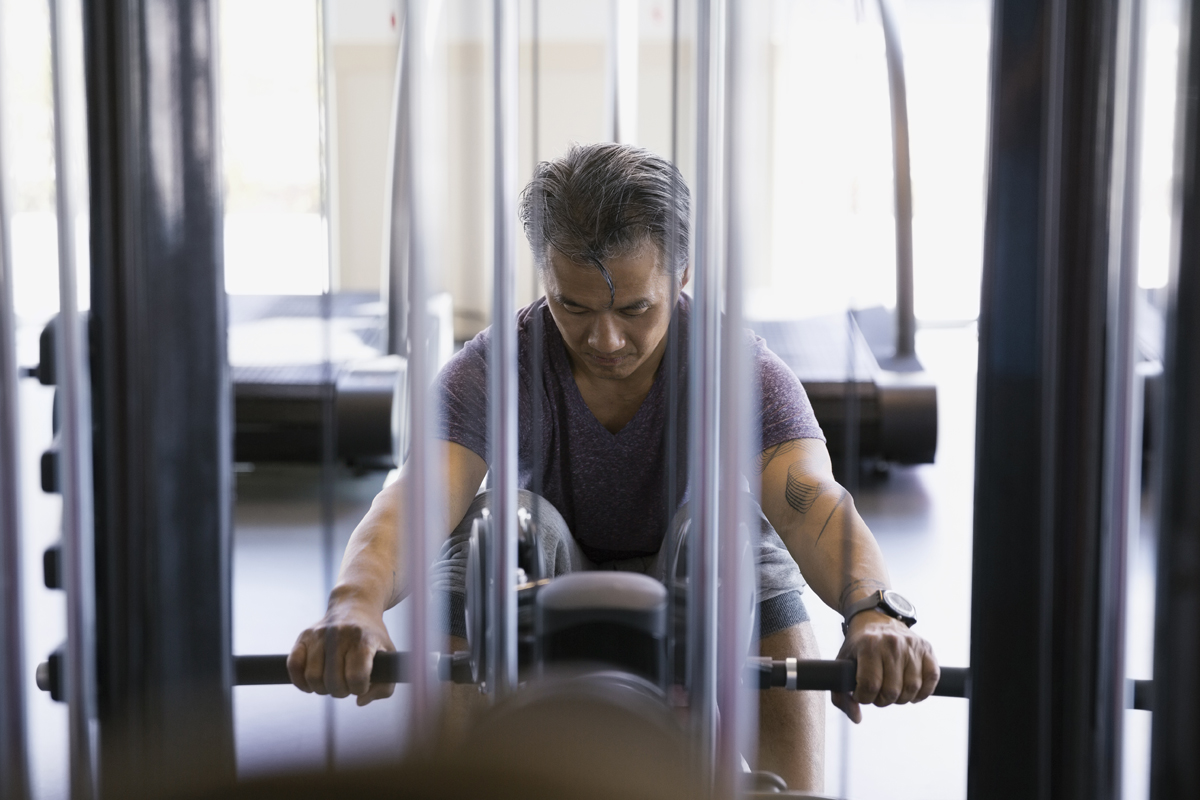
Challenging the body with heavier weights forces the physiological processes to adapt.
Most trainers and coaches don’t have any of the world’s best masters athletes as clients. However, we can use these athletes’ successes as clues when developing protocols for the older adults we serve. To make their programs effective, we must generalize what we know about training a relatively young, healthy clientele and judiciously apply this knowledge to our older clients.
Paramount in extrapolating this knowledge is determining how to manage the higher intensities of work needed to increase, maintain or slow the decline in peak physical capacity. The principle of progressive overload dictates that one must work harder to stimulate the body to get stronger and faster. Challenging the body with heavier weights, faster sprints, longer intervals or longer distances forces the physiological processes to adapt to these new challenges (Steele et al. 2017; Wilmore & Costill 1998).
The body responds to the challenges of heavier weights or more repetitions by regenerating damaged muscle tissue into larger, stronger muscles with more efficient motor units capable of producing more force. Completing cardiovascular intervals at higher intensities or covering longer training distances at lower intensities increases the heart’s pumping capacity, the number of blood vessels supplying muscles and the number of mitochondria, which in turn increases VO2max and cardiovascular efficiency.
These adaptations from progressive overload are the bedrock of physiological improvement for high school and collegiate athletes as well as professional athletes in their 20s, but once peak strength, speed and endurance are attained, the greater priorities are to maintain peak capacity and slow its decline. High-performance training in these stages is more relatable to aging athletes.
Training Along the Ages
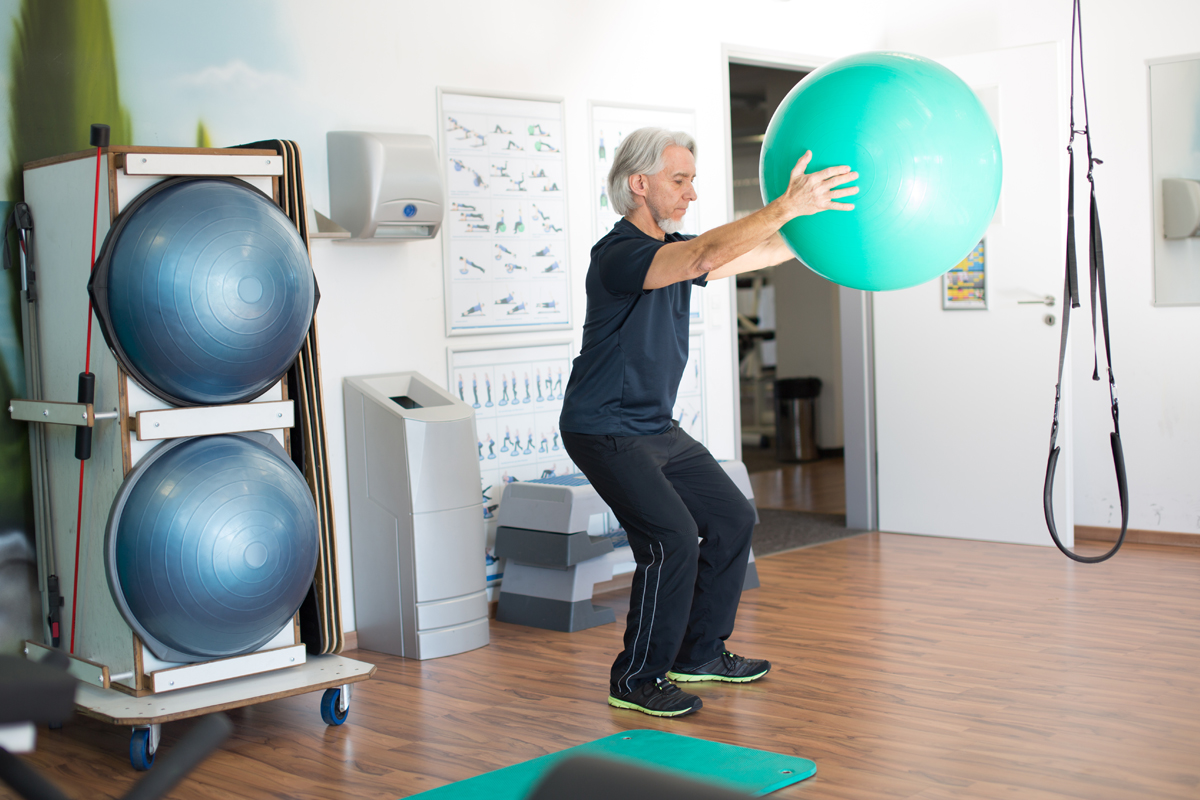
Age brackets can serve as starting points for organizing athletic training for older adults.
The following age-group stages are based on research examining many variables linked to high-performance training. The age brackets are generalized and can overlap based on individual variables, but they serve as starting points to organize high-performance athletic training for adults (Lavin et al. 2019; Ganse et al. 2018; Pugliese 2015; Young & Weir 2015; Harridge & Lazarus 2017).
YOUNG ADULTS, AGES 35–49
Within this age group, most physical capacity is preserved. Depending on previous training status and age, individuals can either improve or maintain physiological peaks or see only subtle declines of about 0.5% per year. These individuals can most likely train similarly to their younger counterparts in their late 20s and early 30s who are still seeing significant improvements in performance, but once adults reach their mid-30s, they need to train deliberately and intelligently to achieve their goals.
MIDLIFE ADULTS, AGES 50–64
This group will begin to see declines in some areas of physical capacity at a linear rate—a steady but consistent 0.5%–1% per year for highly trained individuals. As they get older within this bracket, more consideration needs to be given to monitoring responses to peak challenge workouts, adjusting workouts to lifestyle patterns and developing sound recovery strategies.
OLDER ADULTS, AGES 65–80
This group is a bit of a mystery, both in the research and in masters athletics. Current evidence indicates a faster, more exponential rate of decline—around 1% per year—till the mid-1970s, then annual declines of 1.5%–2% or more. Factors such as illness or injury can cause training disruptions, hastening losses.
See also: Pillars of Functional Training for Active Aging
Training Modalities for Masters Athletes
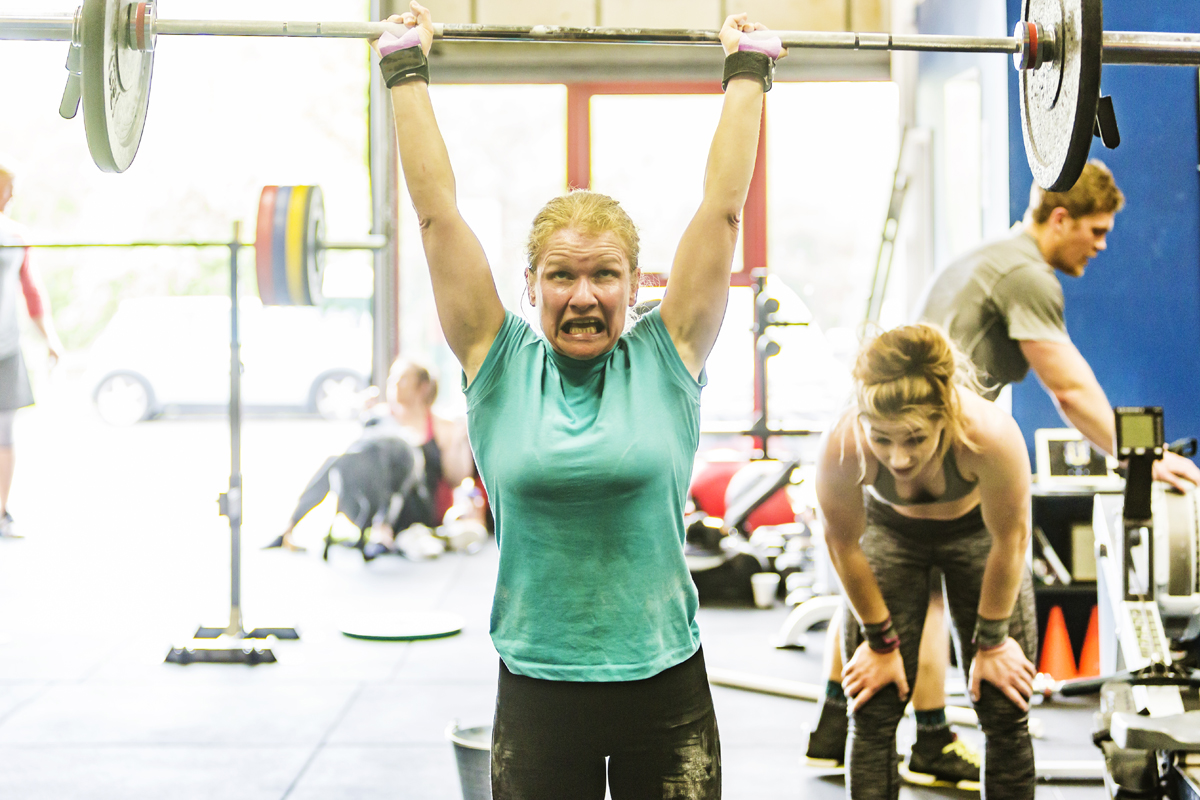
Research points to resistance training as the most critical variable in maintaining peak capacity.
Exercise is the number-one antidote for slowing many of the physiological changes of aging. Muscle integrity, strength, positive endocrine responses, number of motor units, number of healthy mitochondria, number of blood vessels flowing to muscle from the heart and VO2max have all been shown to improve with even the smallest bouts of exercise. Training like an athlete at high-performance levels may result in more gains (Harridge & Lazarus 2017).
Programming for adult athletes will depend on individual needs, physiology and chosen activities and should support a balanced, healthy life. While training for a specific sport is essential because it’s a prime motivator for high performance, every program should include strength, endurance, agility and recovery, which are fundamental to all sports.
Additionally, since healthy, resilient longevity is the goal, drawing from every modality capable of maintaining overall peak capacity becomes more critical with each passing year. Adjustments can be made for competition seasons, work responsibilities and family commitments, but proper planning will allow opportunities for comprehensive training throughout the year.
RESISTANCE TRAINING AND STRENGTH DEVELOPMENT
Most of the scientific literature on aging and exercise points to resistance training as the most critical variable in maintaining peak capacity throughout the decades (Fragala et al. 2019; Fisher et al. 2017; Lavin et al. 2019). Moreover, it becomes more crucial for each successive adult age bracket. As such, resistance training should provide the foundation of a sound high-performance program.
Doing a minimum of two full-body 30- to 60-minute workouts per week is recommended for all types of athletes, from ultramarathoners to golfers. At least three weekly sessions are advised when time permits. Trainers should adjust the schedule for each client’s sport, job and life demands.
The number of repetitions can be adjusted for individual preference, provided the body is being challenged. A recent study comparing low-weight, high-repetition sets with high-weight, low-repetition sets found that both were equally effective at increasing muscle strength and size. The key to achieving increases in strength and muscle integrity seems to be taking a specific exercise to volitional failure (as many reps as possible with proper technique), regardless of the weight, and maintaining similar volumes in training (Lasevicius et al. 2018).
Total-body workout sessions are sufficient for strength development and can be designed in a circuit with six to eight multijoint free-weight exercises performed consecutively. Multijoint free-weight exercises are preferred for older athletes to force them to stabilize movement while performing lifts. Examples are lunges, squats and deadlifts for the lower body and standing dumbbell curls, rows and cable machines for the upper body. Participants go through three to four rounds of the circuit, with the first round acting as a warmup, the second as a transition to peak weight, and the third and fourth performed at peak.
Because recovery rates from physical challenges differ from individual to individual, this format allows each participant to work toward peak efforts while assessing how his or her body is responding. The first two rounds determine the intensity of the second two. If the transition round is more challenging than previous workouts, it’s a signal to adjust goals for the day (Tiidus 2008; Aschwanden 2019; Kellmann et al. 2018).
EXPLOSIVE AND DYNAMIC MULTIPLANAR MOVEMENTS
Most sports consist of moving at many speeds in many directions, and maintaining the ability to move proficiently is a useful metric for healthy aging. Training with explosive plyometric moves such as skipping, hurdling, side-to-side shuffles, jumping and medicine ball throws may seem contraindicated for certain ages, but these motions can be essential for long-term movement efficiency. They develop and maintain motor unit function, making the case for training regularly in this manner (Drey et al. 2016; Kamen 2005; Mosole et al. 2014).
Because of the higher physiological demands that plyometric exercises can place on the body, most high-performance adults will not need full sessions devoted to explosive movements. Speed ladder drills can be used in warmups for resistance training or high-intensity cardio workouts, and other dynamic exercises, such as split jumps, box jumps or single-leg hops, can be woven into sessions. Explosive-power resistance exercises like cleans, push-presses and kettlebell swings can also be used to maintain motor unit capacity (Fragala et al. 2019).
To develop proper muscle activation when performing these exercises, technical proficiency is essential. Also, plyometric programming should include adequate rest (Hoolihan 2018), and trainers should monitor recovery rates, both within and after the workouts, to establish physiological loading patterns.
CARDIOVASCULAR TRAINING
Examinations comparing long-distance aerobic exercise, high-intensity interval training and resistance training have found long-distance training mostly inferior in its ability to stave off significant decrements of aging in healthy, well-trained adults. There is even evidence of adverse aging conditions among some long-distance athletes—low bone density in competitive cyclists, for example (Keay, Francis & Hind 2018).
For some variables, like muscle strength and motor neuron content, endurance athletes fared little better than sedentary, age-matched individuals in tested upper- and lower-body muscle groups, while sprint- and power-based athletes were vastly superior. HIIT and resistance training even matched low-intensity cardiovascular training in metrics such as development of the vascular system and increases in mitochondria (Stenroth et al. 2016; Lavin et al. 2019; Harridge & Lazarus 2017; Bellafiore et al. 2019).
Other recommendations for more intensive modalities over long-distance endurance training come from veteran triathlon coach Joel Friel and Tour de France cycling coach Chris Carmicheal. Friel is the founder of the famous endurance coaching company Training Peaks who endorsed high-intensity training as the preferred modality for endurance athletes over 50. Carmichael is Lance Armstrong’s former coach and author of several books on high-intensity training for time-challenged cyclists and triathletes (Friel 2015; Hoolihan 2016).
Long-distance, low-intensity aerobic exercise has been the primary recommendation for exercise since the mid-1960s and is still prevalent. It does confer health benefits through improvements to the cardiovascular system, but unless a high-performance adult athlete is participating in elite-level endurance events, its use should be limited to recovery and recreational purposes. Once this type of training exceeds 2–4 hours per week, its value plateaus (Patel et al. 2017).
The most important function of low-intensity cardiovascular exercise is its anti-inflammatory effect, when structured correctly. This modality is useful for developing the mitochondria’s ability to reduce ROS and other inflammatory agents if done between 30% and 40% of peak heart rate. This factor makes it a key part of adult athletic programming for recovery. Lower-impact exercise modes like swimming, cycling and rowing are recommended to prevent additional muscle damage (Borges et al. 2016; Aschwanden 2019).
High-intensity interval training has emerged as the preferred system of training to enhance overall cardiovascular function. It improves VO2max, mitochondria content, blood vessel pathways and other markers of aerobic capacity as well as, if not better than, long-distance, low-intensity training in a shorter time. For most adult athletes, the reduced time requirement and workout structure relate favorably to their busy schedules and the duration of their recreational sporting events (Drey et al. 2016; Pugliese 2015; Hoolihan 2016).
See also: Power Training vs. Strength Training for Older Adults
Planning for Recovery
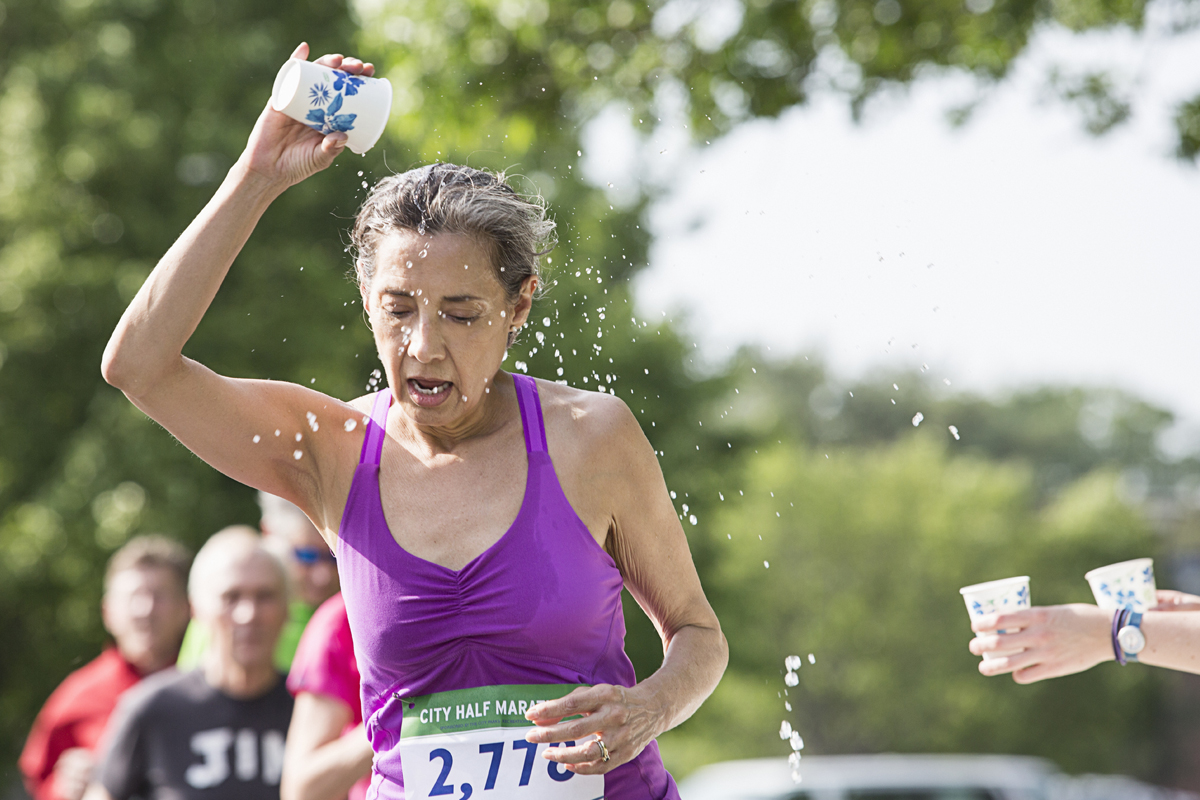
Older athletes need more recovery time between intensive workouts to prevent biochemical stress.
Peak challenges are critical to slowing physiological (and performance) declines, but knowing how much challenge is needed, how often and how to recover is of absolute importance. The progressive overload principle works only when there are breaks in the overloading, allowing the body time to adapt. These breaks are especially important when programming is based on resistance training and HIIT protocols.
Because the older athlete’s physiology differs significantly from that of younger athletes, more recovery time between intensive workouts is required to prevent biochemical stress cascades, which can increase the chances of injury, illness and negative mental outlook (Borges et al. 2016; Tiidus 2008).
The need to allow more time between intensive bouts is mostly due to the hormonal changes that occur with aging. Declines in growth hormone, testosterone and estrogen, which help repair muscle damage, coupled with increases in cortisol, ROS and inflammatory agents, promote a more extended catabolic state. The melatonin decrease and shorter sleep hours also play a role because most anabolic processes occur during sleep (Sawlani et al. 2016; Borges et al. 2016).
Specific physiologies will vary, but stress hormones generally begin to increase after 20 minutes of a high-intensive session and 90 minutes of a low-intensity session. Individual responses vary, and establishing clients’ thresholds of intensity can mitigate workout overloads (Borer 2003).
Workouts that provide physiological stress can improve overall capacity and increase resilience only if they’re properly spaced out on the training schedule and combined with lower-stress workouts in an organized weekly, biweekly or monthly fashion.
Knowing when and how to place the challenging workouts within the schedule requires a good bit of self-monitoring and assessment. Useful techniques include tracking variables like resting pulse, overall workout performance, heart rate variability and energy levels (Kellmann 2018; Borges et al. 2016; Hoolihan 2018).
Exercise and Potential of Masters Athletes
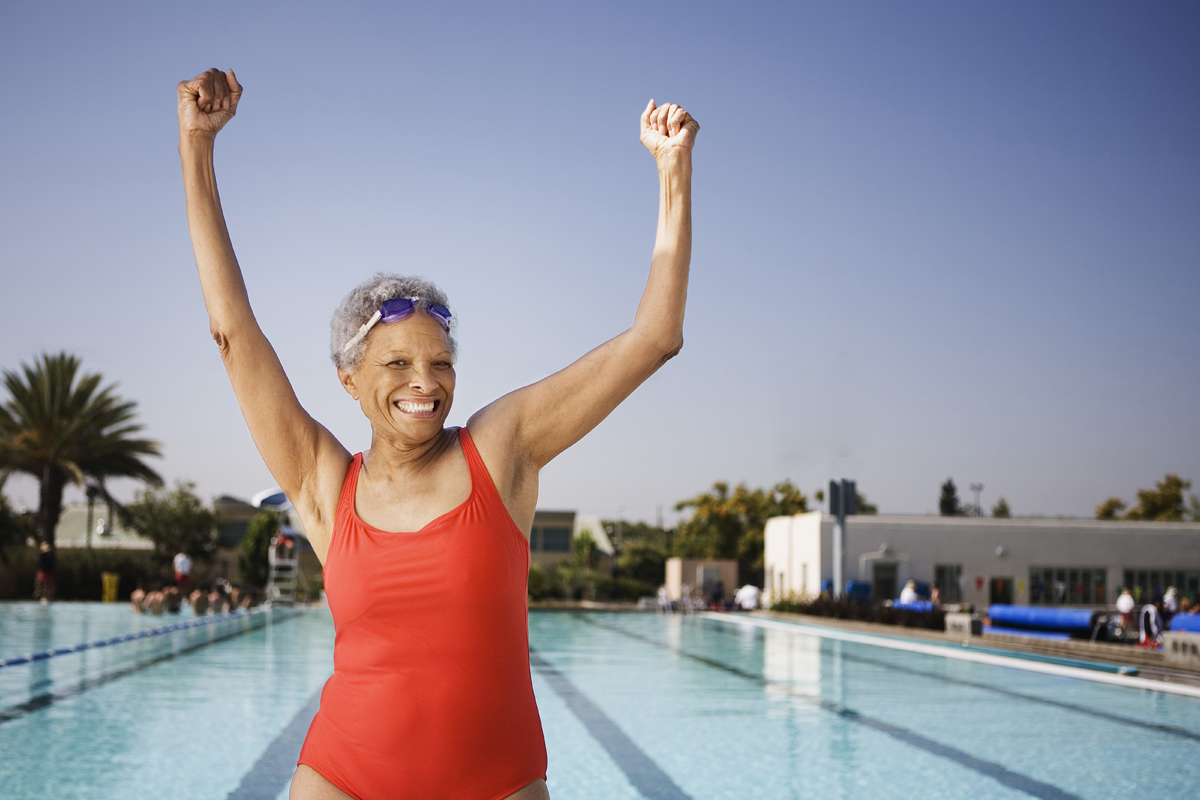
Performance from elite-level masters athletes suggests that individuals over 50 can train intensely and slow age-related declines in physical capacity.
Tackling all of the changes that are inevitable with aging may seem an impossible task, but high-performance masters athletes can apparently reduce the impact of these changes by up to 50% or more.
Consider the case of former Olympic and NFL star Willie Gault, who at age 55 set the 2016 100-meter world record in the 55–59 age group. His time of 11.30 fell short of his personal best of 10.10 in his early 20s, but that indicates a minuscule 10.7% decrease in function over 34 years (Dutch 2016). Given Gault’s career arc as one of the NFL’s fastest kick-returners, his minimal regression may reflect the best example of how lifelong high-performance training can reduce the effect of time’s physiological changes. It will be interesting to follow Gault’s career through his 70s and 80s to clear up some of the mysteries of those age brackets.
Gault and other record-breaking athletes mentioned earlier are certainly outliers. They serve as elite-level baselines for the coaches and trainers of mere mortals and, as such, provide qualified inspiration and evidence for training everyday people who are over 50 and have family, work and other responsibilities.
The anecdotal evidence from elite-level masters athletes suggests that individuals over 50 can train as intensely as younger counterparts and also slow age-related declines in physical capacity.
Broader scientific study into this age bracket also provides cautious evidence supporting this practice. The key for all involved is to realize that age is not just a number but many numbers: number of days needed to recover from an intense workout; number of previous injuries; number of hours slept; and number of hours spent at the job, to name a few.
These numbers, combined with balanced workouts tailored to athletic goals and individual needs, can help older adults deliver robust performances in recreational sports and even achieve elite-level masters rankings. More importantly, clients can become high performers at home and work for many years to come.
Key Points
- High-intensity interval training is the preferred system for improving overall cardiovascular function.
- Multijoint free-weight exercises force athletes to stabilize movement while performing lifts.
- Resistance training is the most critical variable in maintaining peak capacity.
- Programming should include time for rest and recovery.
- Progressive overload is the foundation for all training.
Sample Weekly Plan for Masters Athletes
Workout recovery protocols and training plan design are just as important as the workouts themselves. Monitor clients for overall workout performance, heart rate variability and energy level.
This example provides a rest day on the weekend.
Modalities for Athletic Performance
References
Aschwanden, C. 2019. Good to Go. NY: W.W. Norton & Company.
Bellafiore, M., et al. 2019. Expression pattern of angiogenic factors in healthy heart in response to physical exercise intensity. Frontiers in Physiology, 10 (238).
Borer, K.T. 2003. Exercise Endocrinology. Champaign, IL: Human Kinetics.
Borges, N., et al. 2016. Age-related changes in performance and recovery kinetics in masters athletes: A narrative review. Journal of Aging and Physical Activity, 24 (1), 149–57.
Butler, S.L. 2019. Not so fast: Masters marathon record won’t be official. Runner’s World. Accessed Aug. 2019: runnersworld.com/runners-stories/a25882739/masters-marathon-record-wont-be-official/.
Cartee, G.D., et al. 2016. Exercise promotes healthy aging of skeletal muscle. Cell Metabolism, 23 (6), 1034–47.
Drey, M., et al. 2016. Relation between muscle mass, motor units and type of training in master athletes. Clinical Physiology and Functional Imaging, 36 (1), 70–76.
Dutch, T. 2016. Willie Gault could still put NFLers to shame in a sprint. Track. Accessed Aug. 2019: flotrack.org/articles/5051315-willie-gault-could-still-put-nflers-to-shame-in-a-sprint.
Ferrucci, L., & Fabbri, E. 2018. Inflammageing: Chronic inflammation in ageing, cardiovascular disease, and frailty. National Review of Cardiology, 15 (9), 505–22.
Fisher, J.P., et al. 2017. A minimal dose approach to resistance training for the older adult; the prophylactic for aging. Experimental Gerontology, 99, 80–86.
Fragala, M.S., et al. 2019. Resistance training for older adults: Position statement from the National Strength and Conditioning Association. Journal of Strength and Conditioning Research, 33 (8), 2019–52.
Francis, A. 2019. Another world record for W65 Karla Del Grande. Canadian Running. Accessed Aug. 2019: runningmagazine.ca/sections/runs-races/another-world-record-for-karla-del-grande/.
Friel, J. 2015. Fast After 50: How to Race Strong for the Rest of Your Life. Boulder, CO: VeloPress.
Futterman, M. 2019. World’s fastest (old) man. The New York Times. Accessed Aug. 2019: nytimes.com/2019/07/10/sports/the-worlds-fastest-old-man.html?fbclid=IwAR2Z1aPR5BuDaCAoXPFS-wb9HZ64eKdyBvQXxfnV1ShaL785C7QRceoDuws.
Ganse, B., et al. 2018. Linear decrease in athletic performance during the human life span. Frontiers in Physiology, 9 (1100).
Gillan, B. 2014. Top 10 demographics & interests facts about Americans age 50+. AARP Blogs. Accessed Aug. 2019: blog.aarp.org/notebook/top-10-demographics-interests-facts-about-americans-age-50.
Harridge, S.D.R., & Lazarus, N.R. 2017. Physical activity, aging, and physiological function. Physiology, 32 (2), 152–61.
Hood, D.A., et al. 2019. Maintenance of skeletal muscle mitochondria in health, exercise, and aging. Annual Review of Physiology, 81 (1), 19–41.
Hoolihan, C. 2016. How HIIT helps endurance athletes improve performance. IDEA Fitness Journal, 13 (8), 30–38.
Hoolihan, C. 2018. SAQ for adult clients. American Fitness, 36 (3), 25–35.
Kamen, G. 2005. Aging, resistance training, and motor unit discharge behavior. Canadian Journal of Applied Physiology, 30 (3), 341–51.
Keay, N., Francis, G., & Hind, K. 2018. Low energy availability assessed by a sport-specific questionnaire and clinical interview indicative of bone health, endocrine profile and cycling performance in competitive male cyclists. BMJ Open Sport & Exercise Medicine, 4 (1).
Kellmann, M., et al. 2018. Recovery and performance in sport: Consensus statement. International Journal of Sports Physiology and Performance, 13 (2), 240–45.
Lasevicius, T., et al. 2018. Effects of different intensities of resistance training with equated volume load on muscle strength and hypertrophy. European Journal of Sport Science, 18 (6), 772–80.
Lavin, K.M., et al. 2019. The importance of resistance exercise training to combat neuromuscular aging. Physiology, 34 (2), 112–22.
Lazarus, N.R., & Harridge, S.D.R. 2018. The inherent human aging process and the facilitating role of exercise. Frontiers in Physiology, 9 (1135).
McCormick, R., & Vasilaki, A. 2018. Age-related changes in skeletal muscle: Changes to life-style as a therapy. Biogerontology, 18 (60), 519–36.
Mcleod, J.C., Stokes, T., & Phillips, S.M. 2019. Resistance exercise training as a primary countermeasure to age-related chronic disease. Frontiers in Physiology, 10 (645).
McLeod, M., et al. 2016. Live strong and prosper: The importance of skeletal muscle strength for healthy ageing. Biogerontology, 17 (3), 497–510.
Mosole, S., et al. 2014. Long-term high-level exercise promotes muscle reinnervation with age. Journal of Neuropathology & Experimental Neurology, 73 (4), 284–94.
NSGA (National Senior Games Association). 2019. 2019 National Senior Games presented by Humana boasts record-high athlete attendance. Accessed Aug. 2019: nsga.com/news/2019-national-senior-games-presented-by-humana-boasts-record-high-athlete-attendance.
Patel, H., et al. 2017. Aerobic vs anaerobic exercise training effects on the cardiovascular system. World Journal of Cardiology, 9 (2), 134–38.
Pugliese, L. 2015. Effects of training regimes at different intensities on performance and oxidative stress in masters athletes. Accessed Aug. 2019: air.unimi.it/retrieve/handle/2434/258143/355925/phd_unimi_R09708.pdf.
Sawlani, S., et al. 2016. Endocrine changes with aging. Endocrinology & Metabolism International Journal, 3 (6), 133–43.
Schoenfeld, B.J., et al. 2015. Influence of resistance training frequency on muscular adaptations in well-trained men. Journal of Strength and Conditioning Research, 29 (7), 1821–29.
Seo, D.Y., et al. 2016. Age-related changes in skeletal muscle mitochondria: The role of exercise. Integrative Medicine Research, 5 (3), 182–86.
Steele, J., et al. 2017. A higher effort-based paradigm in physical activity and exercise for public health: Making the case for a greater emphasis on resistance training. BMC Public Health, 17 (1).
Stenroth, L., et al. 2016. Triceps surae muscle-tendon properties in older endurance- and sprint-trained athletes. Journal of Applied Physiology, 120 (1), 63–69.
Tiidus, P.M. 2008. Skeletal Muscle Damage and Repair. Champaign, IL: Human Kinetics.
Wilmore, J.H., & Costill, D.L. 1998. Physiology of Sport and Exercise, (2nd ed.), Champaign, IL: Human Kinetics.
Young, B.W., & Weir, P.L. 2015. Maturing with masters athletes: Tracing the evolution of empirical research on aging and sport expertise. International Journal of Sport Psychology, 46 (6), 208–32.
Zierath, J.R., & Wallberg-Henriksson, H. 2015. Looking ahead perspective: Where will the future of exercise biology take us? Cell Metabolism, 22 (1), 25–30.
Charlie Hoolihan
Director of personal training for the Pelican Athletic Club in Mandeville, Louisiana. He is a member of the IDEA personal trainer membership committee, a fitness writer and presenter. Certifications: NASM, NSCA

